7 Free Ways to Fill More Dental Chair Time (Before Investing in Software)
Why Empty Chair Time Costs Your Practice $89,000+ Annually
Every empty appointment slot represents lost revenue that never returns. The average dental practice experiences 12-18% schedule gaps, translating to $89,000+ in lost annual revenue for a typical practice. While advanced scheduling systems can automate optimization, these seven manual strategies deliver immediate improvements using tools you already have.
Strategy #1: The Double-Booking Safety Net System
Strategic double-booking prevents revenue loss from last-minute cancellations. Book 110% of your capacity for Monday mornings and post-holiday periods when no-shows peak at 23%. Create a priority list of procedures that can be shortened or patients who can be rescheduled easily.
Implementation Steps:
Track your no-show patterns by day and time for 30 days. Identify slots with highest cancellation rates (typically Monday 8am, post-lunch appointments, and Fridays). Double-book these slots with shorter procedures or flexible patients.
Strategy #2: The 48-Hour Confirmation Protocol
Reduce no-shows by 67% with systematic confirmation calls 48 hours before appointments. This timing gives patients opportunity to reschedule while allowing you time to fill cancelled slots.
Confirmation Script Template:
"Hi [Name], this is [Practice] confirming your appointment with Dr. [Name] on [Day] at [Time] for [Procedure]. Please call us at [Number] if you need to reschedule. We look forward to seeing you!"
Strategy #3: Emergency Appointment Slots
Reserve 2-3 slots daily for same-day emergency appointments. These slots fill cancelled appointments immediately while capturing patients who need urgent care. Price emergency slots 15-20% higher to offset scheduling disruption.
Emergency Slot Management:
Block emergency slots at 10am, 2pm, and 4pm - times when patients typically call with urgent needs. If no emergencies arise by 24 hours prior, release these slots to your waiting list.
Strategy #4: Waiting List Optimization
Transform your waiting list into a revenue recovery system. Categorize waiting list patients by procedure type, scheduling flexibility, and advance notice requirements.
Waiting List Categories:
Flexible patients: Can come within 24 hours. Procedure-specific: Waiting for particular services. Time-sensitive: Need appointments within specific windows. Short-notice: Prefer last-minute availability.
Strategy #5: Treatment Plan Acceleration
Convert existing patients' future treatment plans into immediate appointments when cancellations occur. Review treatment plans weekly to identify procedures that can be moved up.
Acceleration Checklist:
Identify patients with multi-visit treatment plans. Contact patients 48-72 hours before cancelled appointments offering earlier completion. Provide small discount (5-10%) for short-notice scheduling to incentive acceptance.
Strategy #6: Block Scheduling for Efficiency
Group similar procedures into time blocks to reduce transition time and setup costs. Schedule all hygiene appointments during specific hours, followed by restorative work blocks.
Block Scheduling Template: Paragraph 13: 8am-11am: Hygiene and cleanings. 11am-1pm: Restorative procedures. 2pm-4pm: Complex treatments. 4pm-6pm: Emergency and short procedures.
Strategy #7: Staff Incentive System for Schedule Optimization
Create staff incentives for maintaining full schedules. Reward front desk team for keeping cancellation rates below 8% and achieving daily production targets.
Monthly bonus for maintaining 95%+ schedule capacity. Recognition for creative solutions to fill last-minute cancellations. Team celebration when monthly production targets are exceeded.
Measuring Success: Key Metrics to Track
Monitor these metrics monthly to gauge improvement: Schedule utilization percentage, no-show rates by time slot, average revenue per chair hour, and waiting list conversion rates.
When to Consider Technology Solutions
These manual strategies provide immediate results and prepare your practice for future technology integration. For practices ready to automate these processes, advanced scheduling AI can optimize slot allocation, predict no-shows, and automatically manage waiting lists. However, mastering these fundamental strategies ensures success regardless of the technology platform you choose.






